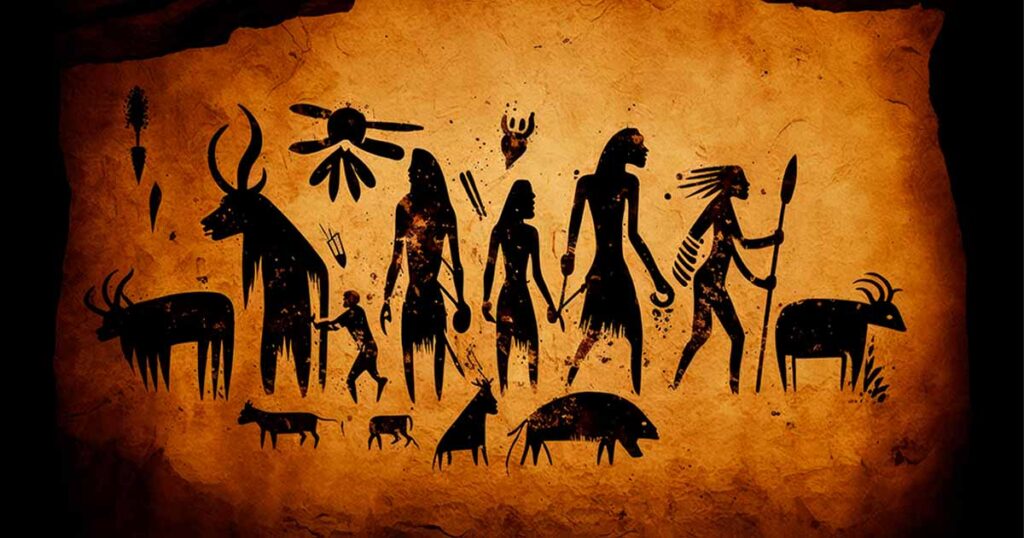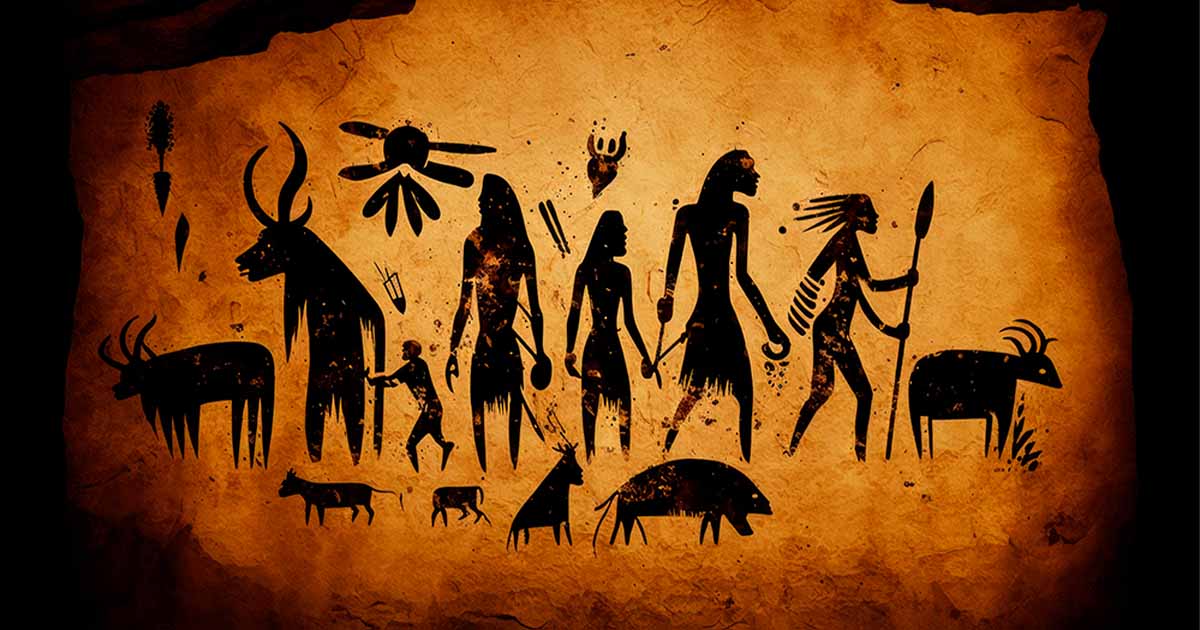

A new study by a pair of Israeli researchers published in the Royal Society journal Philosophical Transactions B puts forward a fresh and innovative theory about the causes of the Neolithic Revolution, which represents perhaps the most profound cultural change in human history.
Tackling the Neolithic Revolution from a New Angle
Professors Gonen Sharon and Ayelet Shavit, who are both affiliated with Technion, the Israel Institute of Technology, applied an evolutionary model to the transition from hunting-gathering to farming and agriculture, to see what insights this innovative approach might produce.
They were seeking a fresh perspective that could explain this incredibly impactful shift, which didn’t necessarily make the lives of people living in the post-Ice Age and early Neolithic period any easier. They concluded that this change was the result of people’s conscious decision to start cooperating in new and different ways, which presumably would have benefited them socially and materially.
Once they started doing this, the eventual formation of more densely settled, complex and socially stratified communities was inevitable, the Israeli researchers claimed. Population growth, accompanied by a lack of opportunities for those on the lower rung of the social and economic ladder, would have necessitated the development of a new way of securing enough food to ensure everyone’s survival. This led to the Agricultural Revolution, which many people don’t realize was actually a separate development from the initial Neolithic Revolution.

Representation of Neolithic farmers. (Fair Use)
Farming is Hard, So Why Did Everyone Become Farmers?
What first motivated the two academics to look more closely at the Neolithic Revolution is their puzzlement as to why it took place at all. The researchers point out that for the individual, the switch from the freedom and independence of hunting and gathering to the dawn-to-dusk toil associated with agriculture likely made life worse for most people.
Furthermore, the researchers also noted that previous explanations for the transition and onset of the Neolithic Revolution are not entirely convincing. The usual suspects include climate change (the world getting colder or drier), spurts of sudden population growth, population loss through disease or famine that forced depleted groups to make new alliances and chronic resource shortages.
Although these factors may have been involved in the shift, they can’t explain why the same transition happened in various parts of the world, including China, Asia, Europe, Africa, and the Americas in later times. Conditions everywhere were different, yet the Neolithic Revolution proved unstoppable on every continent and at every latitude.
To briefly summarize the ideas put forward in their new study, Sharon and Shavit argued that human society experienced radical change as a result of a three-stage evolutionary process that started more than 12,000 years ago. First came an increased level of coordination between individuals. This in turn led to more cooperation among larger groups, which was the second step in the process. Finally, there came the establishment of real communities with settled and constantly growing populations, which represents the final stage in the three-stage model.

Representational image of a Neolithic village. (Justinas / Adobe Stock)
Exploring the Link between Collective Behavior and the Neolithic Revolution
This model for development was first proposed by philosopher James Griesemer, in his 2017 book entitled Landscapes of Collectivity in the Life Sciences (Shavit was one of the book’s editors, hence his familiarity with the theme). Griesemer used his concept to explain collective or cooperative behavior in all types of living systems. The Israeli academics have espoused the idea it is the only appropriate model for explaining how the lifestyle associated with the Neolithic Revolution and Agricultural Revolution became the standard everywhere.
“The evolutionary mechanism suggests that people started grouping; complexity increased; populations grew; people began to settle down and at some point, the complexity of societal organization reaches a situation in which one doesn’t need a big change to push matters over the brink,” Sharon said in an interview with Haaretz discussing the new study.
His reference to a change that would “push matters over the brink” refers to a point of no return where survival would have required the development of farming and agriculture, while also ruling out any return to hunting and gathering as a primary source of finding sustenance.
Even if Sharon and Shavit’s thesis is accepted, the reasons for why this “grouping” began in the first place remain a matter for debate. Regardless of the cause, under this new model the most significant factor that led to the Neolithic Revolution was the increase in cooperation among individuals. This change had huge consequences, as it steered human society in a radically different direction that picked up momentum as it progressed.
Cooperation, Community and Agriculture, in that Evolutionary Order
By 10,000 BC, humanity’s collective transition away from hunting and gathering and toward the formation of communities, the domestication of animals and the cultivation of edible crops had begun in earnest. Referred to as the Neolithic Revolution, this transition took place across the globe.
It is often assumed that the Neolithic Revolution and the Agricultural Revolution are the same thing. But in fact, the former predated the latter by a few thousand years in most parts of the world. There were many ancient societies and cultural groups that formed communities before they started farming. One enlightening example is provided by the Natufian people, who lived in the Levant in the days before the Agricultural Revolution took place.
In approximately 13,000 BC, the Natufians began settling down in the lands of modern-day Israel, Lebanon and Syria. They built stone houses and lived in concentrated communities or neighborhoods. They were the earliest culture in the southern and eastern Mediterranean region to make fishing hooks from bones.
The Natufians buried their dead beneath their dwellings, extending their sense of continuity and community into the afterlife. They also domesticated dogs and learned how to bake flatbread and brew beer, and became interested in shamanism and the exploration of alternate realms.
The Natufians adopted many cultural practices associated with the Neolithic Revolution, but without making the complete shift into agriculture at the same time. “The Neolithic is much greater than agriculture,” Sharon explained. “Agriculture was part of the Neolithic Revolution, but the transition to Neolithic changed the entire way people looked at the world.”
The revelation, that community came first and agriculture later, adds support to the evolutionary thesis put forward by Sharon and Shavit. Agriculture represented a logical and necessary response to the new style of societal and cultural organization, an inevitable development once the food requirements of a larger and more settled population couldn’t be met by whatever hunting and gathering activities continued.
In other words, the Neolithic Revolution, defined as people’s decision to ditch hunting and gathering for a more sedentary and settled existence, was the change that allowed the Agricultural Revolution to take flight and perform its transformational magic.
People all over the world had to find a different way to meet their collective caloric needs — which they did, through the domestication of animals and crops that they’d hunted and gathered in the past. This was an ingenious solution and, if Sharon and Shavit are right, one made necessary by the evolution of human culture and society over the course of a few thousand years.